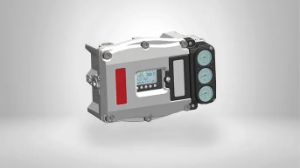Positioners and limit switches are crucial in various industrial applications, ensuring precise control and safety measures. Positioners are devices designed to accurately control the position of a valve or actuator in response to an input signal. They are commonly used in pneumatic and hydraulic systems to regulate the flow of fluids or gases by adjusting the opening and closing of valves. Positioners enable operators to precisely control the process variables, such as flow rate or pressure, improving industrial operations' efficiency and accuracy. On the other hand, limit switches serve as safety devices that detect the presence or absence of an object and trigger an action when a predetermined limit is reached. These switches are often employed to monitor the position of mechanical components, such as valves, actuators, or machine parts, and ensure that they operate within safe limits. Limit switches can signal the end of travel, prevent overtravel, or initiate emergency shutdown procedures in case of abnormal conditions, enhancing operational safety and protecting equipment from damage. Positioners and limit switches contribute to the reliability, precision, and safety of industrial processes across various sectors, including manufacturing, petrochemicals, and utilities.
Categories from Logix Flowserve (1)
Positioners and Limit Switches
Filters
Filters
1 RESULT
content loaded
MPN:338919.999.000
Logix 520MD+ Linear Digital Positioner, D-Shaft Design, White Cover, 4-Way Air Spool, Intrinsically Safe Certs, HART 4-20 mA Communication Protocol, LCD Display.
Logix 520MD+ Linear Digital Positioner, D-Shaft Design, White Cover, 4-Way Air Spool, Intrinsically Safe Certs, HART 4-20 mA Communication Protocol, LCD Display.
Sale Price:
Loginto your account
In Stock (20)
Ships within 1 business day
MPN:338919.999.000
Logix 520MD+ Linear Digital Positioner, D-Shaft Design, White Cover, 4-Way Air Spool, Intrinsically Safe Certs, HART 4-20 mA Communication Protocol, LCD Display.
Logix 520MD+ Linear Digital Positioner, D-Shaft Design, White Cover, 4-Way Air Spool, Intrinsically Safe Certs, HART 4-20 mA Communication Protocol, LCD Display.
Sale Price:
Loginto your account
In Stock (20)
Ships within 1 business day


